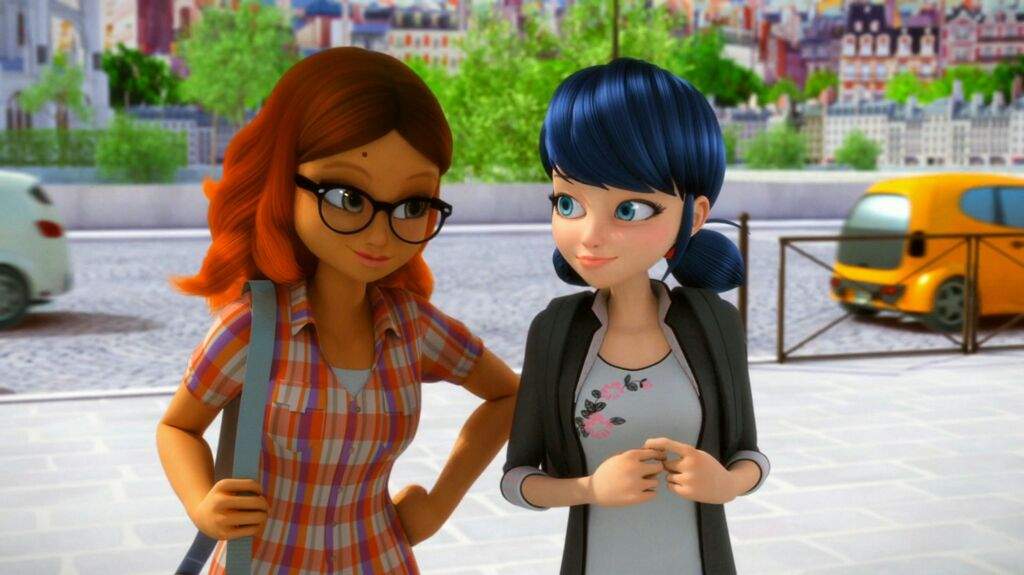 Strong, genuine, and lovable characters—both protagonists and antagonists—are at the core of a solid story; however as every story is interactive in one way or another, it’s not just about how these characters stand on their own. Equally, if not more, important a cast needs to build off of one another to play into a dynamic that is appealing in some way, shape, or form.
Strong, genuine, and lovable characters—both protagonists and antagonists—are at the core of a solid story; however as every story is interactive in one way or another, it’s not just about how these characters stand on their own. Equally, if not more, important a cast needs to build off of one another to play into a dynamic that is appealing in some way, shape, or form.
As with any live-action films and television series, characters in animated works can blatantly lack chemistry with one another. Friendships can feel forced or shallow; and as such, real connections (even in fictional worlds) can be difficult to come by.

However, there are some key series that subtly preach friendship in ways that are filled with sincerity, or in extreme cases, conveyed as believably unbreakable bonds.
There are many different types of friendships showcased in animated works. Some great portrayals that are highlighted in this article include:
- Enid, Rad, and K.O.’s sweet and charming connection in OK K.O.
- Jen, Nikki, Caitlyn, Jude, Jonsey, and Wyatt’s fun and playful group dynamic in 6teen
- Star and Marco’s dance between romantic and platonic in Star Vs. the Forces of Evil
- And basically everyone under the X-Mansion’s roof’s family relationship in X-Men Evolution
Each of these series present a different variation of cartoon friendships that can easily be translated into a spark that is comparable to genuine connections in reality. The chemistry of a group of people on screen can make or break how invested viewers are in these characters, and how likely they are to be pulled into a series as a whole.
The Charming Connection

Enid, Rad, and K.O.’s charming connection presents an unlikely group of friends with varying personalities that fit together like a jigsaw puzzle. They learn more about one another throughout the series, and have grown incredibly fond of each other as well. They are incredibly supportive, acknowledge each other’s strengths, and fill out each other’s weaknesses. The way these personalities bounce off of one another makes the character-driven series addicting to watch, and has become one of its greatest and most defining features [also see Milo Murphy’s Law and We Bear Bears].
The Playful Group Dynamic

The six protagonists of 6teen present a group dynamic that centers the series. It’s a simple episodic show which premise is about the day-to-day life of 6 teenagers who spend the vast majority of their time outside of school hanging out at a local mall. These characters fit into commonly-used tropes; hence, their personalities are not necessarily complex:
- Jen, the athletic overachiever
- Nikki, the goth who takes a sarcastic approach to life
- Caitlyn, the spoiled and shallow girl with a secretly large heart
- Wyatt, the reserved and struggling musician
- Jonesy, the lady-obsessed narcissist
- Jude, the chill skater dude

Perhaps this overtly-stereotypical cast wouldn’t work in this day and age where uniqueness is the way to go (hello Adventure Time and Steven Universe), but when 6teen was at its prime in 2005, this playful dynamic was all the rage. Circling back to the topic of this article, not only is there at least one character that most people watching can resonate with, but the group as a whole bounces off one another seamlessly [also see Stoked, Craig of the Creek, Voltron: Legendary Defenders, Danny Phantom, The Emperor’s New School].

Being so different works exceptionally well; not only for the series’ creators to get all of their bases covered, but they each share a different perspective and approach to zany issues that ultimately have them working together to fill one another’s shortfalls—personality and otherwise. Despite being such a contrast in characters, they fit together like the perfect jigsaw puzzle.
In universe, the main dynamic showcased in 6teen can be described as exciting, playful, youthful, relatable, and comedic. But it can also be described as caring, empathetic, supportive, and lifelong. This series has taken a snapshot of what it is like to be a young person living with a core support system outside of family, and definitely deserves more credit in displaying such exciting relationships.
The Romantic vs. Platonic Question
 Star and Marco of Star Vs. the Forces of Evil share a special nuanced relationship. These characters have been friend only for 2 entire seasons before the question of more than friends hit smack during its mid-season-2 finale (Kim Possible anyone?). Star and Marco bounce off of each other very well; Star being the adventurous crazy type, and Marco granted the unsolicited nickname of “safe kid” throughout the series’ entire first season.
Star and Marco of Star Vs. the Forces of Evil share a special nuanced relationship. These characters have been friend only for 2 entire seasons before the question of more than friends hit smack during its mid-season-2 finale (Kim Possible anyone?). Star and Marco bounce off of each other very well; Star being the adventurous crazy type, and Marco granted the unsolicited nickname of “safe kid” throughout the series’ entire first season.
 What’s great about their on-screen dynamic is that it is one of the most believable friendships that has graced animated television in recent time. The amount Star and Marco care for one another is immense—to the point where, as they have grown so much together, it only makes sense that the idea of a blossoming romantic relationship is in the question.
What’s great about their on-screen dynamic is that it is one of the most believable friendships that has graced animated television in recent time. The amount Star and Marco care for one another is immense—to the point where, as they have grown so much together, it only makes sense that the idea of a blossoming romantic relationship is in the question.
The way these character’s relationship is built is so genuine, that the romantic angst which follows comes naturally. During the series’ most recent season, our duo’s relationship has only grown more complex as their romantic timing is completely out of sync. But despite Star being in another relationship, the protagonists are beginning to realize that they are perfect for one another.
 Both friendships and romantic relationships are arenas difficult to maneuver within—especially at a young age. It’s only natural that new feelings are explored and the characters grow both together and apart. To put it simply, where the latest season leaves off, Star and Marco’s relationship can be best described as increasingly awkward. But this does not even begin to change how much these characters care for one another and how much they still see each other as a huge part of their lives. They will silently fight through and mishaps and emotional struggles to stay within each others’ radar. These emotions are powerful, and conveyed as relatable and believable.
Both friendships and romantic relationships are arenas difficult to maneuver within—especially at a young age. It’s only natural that new feelings are explored and the characters grow both together and apart. To put it simply, where the latest season leaves off, Star and Marco’s relationship can be best described as increasingly awkward. But this does not even begin to change how much these characters care for one another and how much they still see each other as a huge part of their lives. They will silently fight through and mishaps and emotional struggles to stay within each others’ radar. These emotions are powerful, and conveyed as relatable and believable.
The Roommate-Turned-Familial Ties
 Finally, the relationship of the X-Men: Evolution cast is wonderfully realistic. A group of people who’s deviation from the norm, or “mutant abilities” if you will, brings them together. The cast of X-Men: Evolution exemplifies this dynamic exceptionally well. These are characters who don’t necessarily have a ton in common, but stay united as they’re the only ones who understand each other on a fundamental level. This understanding is enough to forge an unbreakable bond, despite their friendship likely not thriving in any other case.
Finally, the relationship of the X-Men: Evolution cast is wonderfully realistic. A group of people who’s deviation from the norm, or “mutant abilities” if you will, brings them together. The cast of X-Men: Evolution exemplifies this dynamic exceptionally well. These are characters who don’t necessarily have a ton in common, but stay united as they’re the only ones who understand each other on a fundamental level. This understanding is enough to forge an unbreakable bond, despite their friendship likely not thriving in any other case.
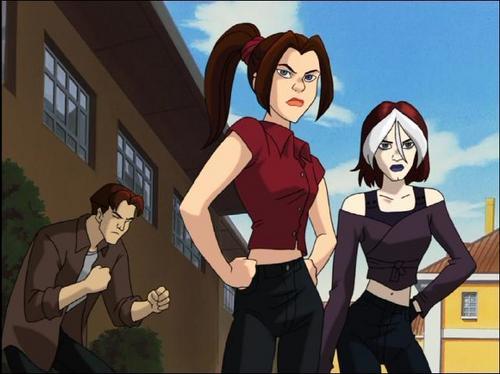
This type of relationship is more so defined by people of stark contrast coming together via obligation or necessity above all else [also see Young Justice, Teen Titans, Avatar: the Last Airbender, Mysticons, & Phineas and Ferb]. Since these characters are essentially forced out of circumstance to spend many waking hours with one another, their tolerance/adaption soon transforms into deep friendships with some, and supportive acquaintances with others. Overall, this defines a familial relationship where characters learn to get along with each other to the point where they still heavily support one another when it matters despite clashes in values, characteristics, and personalities.
This type of relationship defines what it is like to be a part of a family: not necessarily seeing eye to eye, but supporting one another regardless.
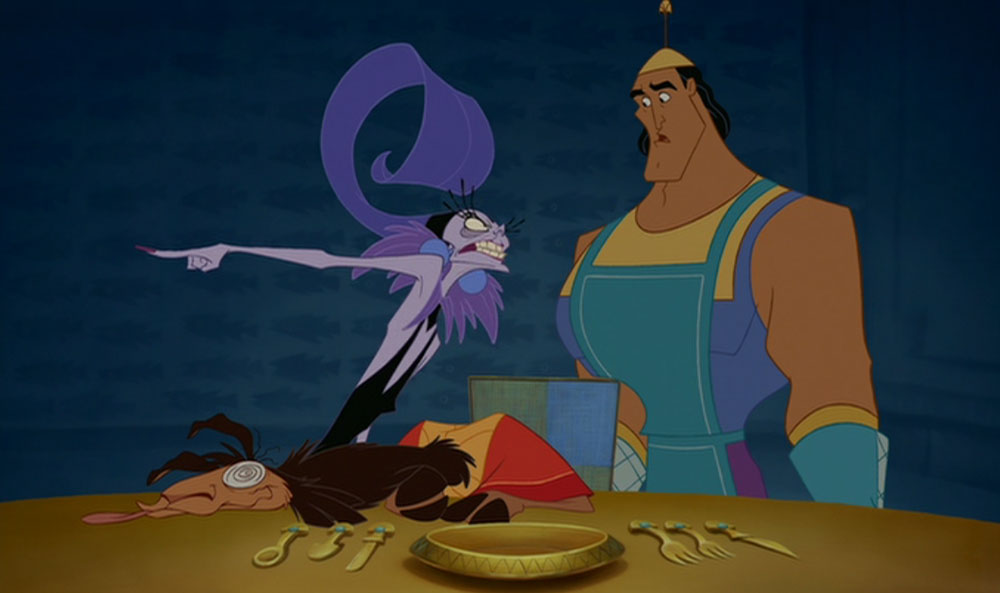 Overall, there are many cartoons out there that present friendship as deep as an empty shell; however, there are also many great titles that actively focus on building strong relationships between its characters. The latter is made up of excellent animated works that draws viewers in because the characters are so addicting to watch—even if the series isn’t specifically character-driven.
Overall, there are many cartoons out there that present friendship as deep as an empty shell; however, there are also many great titles that actively focus on building strong relationships between its characters. The latter is made up of excellent animated works that draws viewers in because the characters are so addicting to watch—even if the series isn’t specifically character-driven.
What is most evident is that many of the series mentioned above have a spark that cannot be easily replicated. It takes a level of careful consideration to come up with, not only stand-out characters on their own, but those that light up a room when they’re together. Characters that play off of one another form an iconic cast that is addicting to watch on screen (Yzma and Kronk anyone?).
 A/N: What a great batch of surreal friendships (literally)! As someone who didn’t have many close friends growing up, I would vicariously live through these—and many more—cartoon characters. Sad, I know. But hey, if I didn’t drown my sorrows in animation as an escape from my oh-so-difficult 12-year-old reality, this blog would probably not exist. So yeah..
A/N: What a great batch of surreal friendships (literally)! As someone who didn’t have many close friends growing up, I would vicariously live through these—and many more—cartoon characters. Sad, I know. But hey, if I didn’t drown my sorrows in animation as an escape from my oh-so-difficult 12-year-old reality, this blog would probably not exist. So yeah..
 Ever since acquiring Marvel Animation in 2009, Disney hasn’t exactly earned the best track record in its attempts at revamping the Spiderman animated franchise. On top of 2012’s Ultimate Spiderman receiving mixed reviews since it’s premiere, 2017’s Marvel’s Spiderman series has also garnered more than its fair share of criticism.
Ever since acquiring Marvel Animation in 2009, Disney hasn’t exactly earned the best track record in its attempts at revamping the Spiderman animated franchise. On top of 2012’s Ultimate Spiderman receiving mixed reviews since it’s premiere, 2017’s Marvel’s Spiderman series has also garnered more than its fair share of criticism.
 Finally, fast forward 7 years to 2017 and there was a glimmer of hope: emerging out of Ultimate Spiderman’s 104-episode ashes were interesting character designs followed by talk of a Spiderman series that would unite old and new fans. News spread like wildfire, and soon enough fans were optimistic that a series would finally live up to its 2009 rendition.
Finally, fast forward 7 years to 2017 and there was a glimmer of hope: emerging out of Ultimate Spiderman’s 104-episode ashes were interesting character designs followed by talk of a Spiderman series that would unite old and new fans. News spread like wildfire, and soon enough fans were optimistic that a series would finally live up to its 2009 rendition.
 The series’ characters are not very complex at first. Peter Parker himself is not entirely relatable to start with either—jokes falling flat plus high-and-mighty demeanor is not an ideal combination. However, as time passes he and his peers become much more likable.
The series’ characters are not very complex at first. Peter Parker himself is not entirely relatable to start with either—jokes falling flat plus high-and-mighty demeanor is not an ideal combination. However, as time passes he and his peers become much more likable. As the pilot mentioned: Science is the new currency, which is the basis of this series. At times where Spiderman cannot pull something off, Peter Parker comes to the rescue with his resourceful and science-incorporated ideas. In this rendition of the web head’s story, our hero is not all about his spider-inspired abilities; instead, half of Spidey’s battles are won because of Peter’s unique mind. Unlike previous Spiderman cartoons, the line between Spiderman and Peter Parker is much more blurred as their personas heavily bleed into one another. Or rather, Peter doesn’t shed his civilian form completely when he changes into his red-and-blue body suit.
As the pilot mentioned: Science is the new currency, which is the basis of this series. At times where Spiderman cannot pull something off, Peter Parker comes to the rescue with his resourceful and science-incorporated ideas. In this rendition of the web head’s story, our hero is not all about his spider-inspired abilities; instead, half of Spidey’s battles are won because of Peter’s unique mind. Unlike previous Spiderman cartoons, the line between Spiderman and Peter Parker is much more blurred as their personas heavily bleed into one another. Or rather, Peter doesn’t shed his civilian form completely when he changes into his red-and-blue body suit.
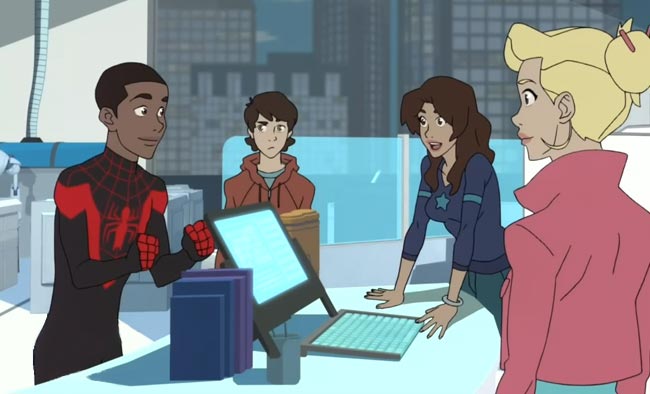 So to answer the question posed in the title of this article, does this series deserve all of the hate that it has been receiving?
So to answer the question posed in the title of this article, does this series deserve all of the hate that it has been receiving? So, to all new and old Spiderman fans alike, I personally invite you to give this series a shot. Approach it with an open mind, and try to disconnect from the high expectations left behind in 2009. We are almost a decade past this point, and as glory as the past is, it’s called the past for a reason. It’s about time to start looking forward (the chances of Spectacular Spiderman returning with a third season is miniscule anyways).
So, to all new and old Spiderman fans alike, I personally invite you to give this series a shot. Approach it with an open mind, and try to disconnect from the high expectations left behind in 2009. We are almost a decade past this point, and as glory as the past is, it’s called the past for a reason. It’s about time to start looking forward (the chances of Spectacular Spiderman returning with a third season is miniscule anyways).


 It’s no surprise that television reboots are inherently expected to satisfy both new and old audiences by living up to earlier well-loved renditions. Recent animated reboots have been in the midst of controversy as of late in “lacking complexity” to appeal to younger audience members. Additionally, the sole purpose to many recent reboots is assumed to be tied to merchandising. The mixed feelings towards Rise of the TMNT are not evaded in this respect as merchandising is already being churned out for this series. So yes, many might assume that this is yet another complexity-stripped reboot targeted at children for the sake of selling toys (Teen Titans GO! and Powerfuff Girls 2016 have surely helped to pave the way in disdain for cartoon reboots).
It’s no surprise that television reboots are inherently expected to satisfy both new and old audiences by living up to earlier well-loved renditions. Recent animated reboots have been in the midst of controversy as of late in “lacking complexity” to appeal to younger audience members. Additionally, the sole purpose to many recent reboots is assumed to be tied to merchandising. The mixed feelings towards Rise of the TMNT are not evaded in this respect as merchandising is already being churned out for this series. So yes, many might assume that this is yet another complexity-stripped reboot targeted at children for the sake of selling toys (Teen Titans GO! and Powerfuff Girls 2016 have surely helped to pave the way in disdain for cartoon reboots).
 A/N: For as long as I could remember, the Teenage Mutant Ninja Turtles (TMNT) franchise was the epitome of an obscure concept. I never even began to imagine a day where I could enjoy a rendition of these sewer-dwelling anthropomorphic reptiles in any way, shape, or form; yet here we are, after watching the first episode I found it to be quite an unexpectedly entertaining watch.
A/N: For as long as I could remember, the Teenage Mutant Ninja Turtles (TMNT) franchise was the epitome of an obscure concept. I never even began to imagine a day where I could enjoy a rendition of these sewer-dwelling anthropomorphic reptiles in any way, shape, or form; yet here we are, after watching the first episode I found it to be quite an unexpectedly entertaining watch.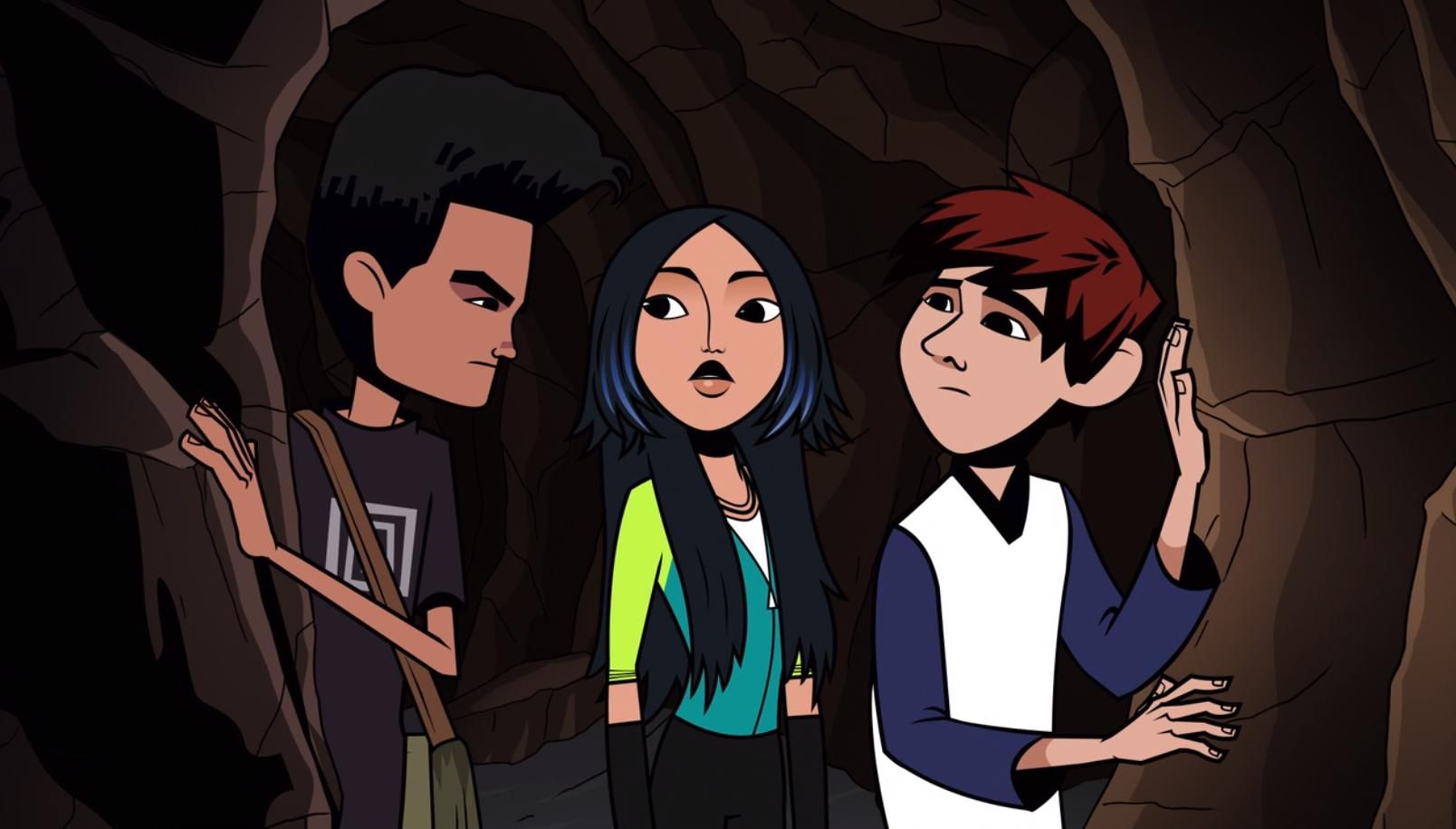 The Hollow is a new Netflix-original animated series produced by Vancouver’s
The Hollow is a new Netflix-original animated series produced by Vancouver’s 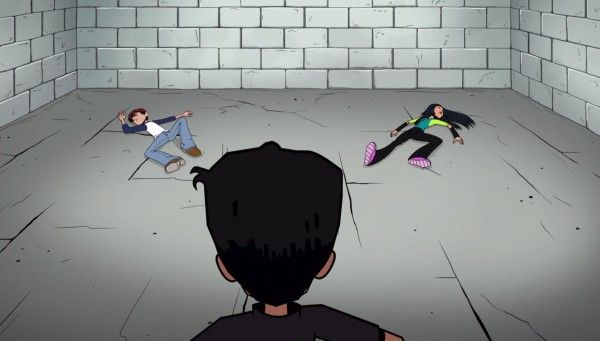
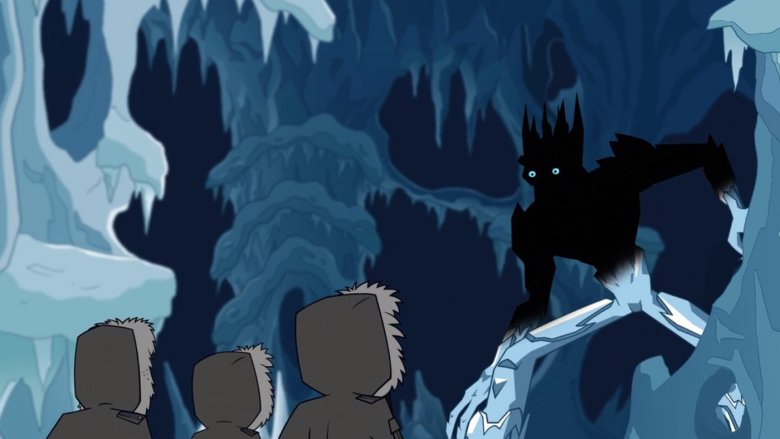




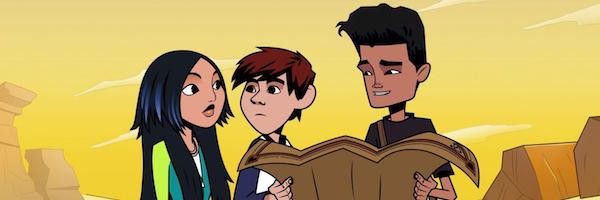
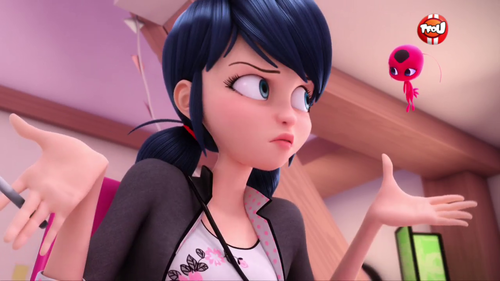 Female portrayals are improving immensely within the arena of modern-day cartoons. Alongside the increase of women showrunners, writers, and storyboard artists within the animation industry, many female characters are being placed in the roles of leaders, fighters, and influential advocates. A few examples include: Star Butterfly of
Female portrayals are improving immensely within the arena of modern-day cartoons. Alongside the increase of women showrunners, writers, and storyboard artists within the animation industry, many female characters are being placed in the roles of leaders, fighters, and influential advocates. A few examples include: Star Butterfly of 
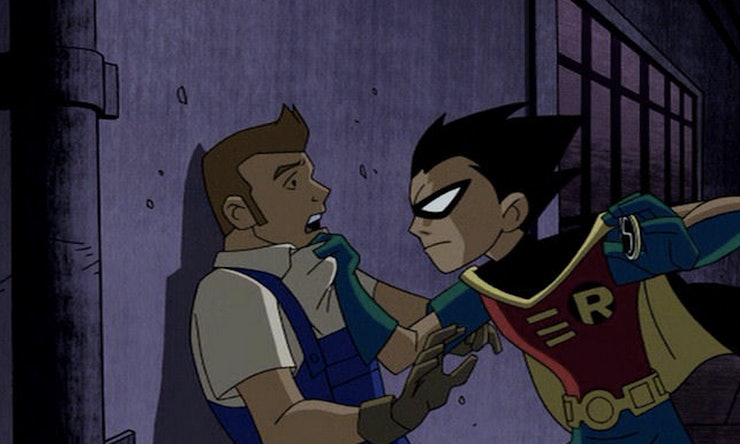 Characters who are beloved by many, myself included, do not escape negatively stereotypical traits. Some examples include: Robin of
Characters who are beloved by many, myself included, do not escape negatively stereotypical traits. Some examples include: Robin of 
 Another problematic trope commonly portrayed through male cartoon characters can be identified through an opposing set of traits: clueless, frightful, clumsy, and emotional are some adjectives that define this stereotype. Characters like Ron Stoppable and Danny Fenton (in civilian form) embody this personality. And despite often being well-loved by the audience, they are typically completely disrespected within the context of their respective series. These characters are seen to hold a low social ranking and are often bullied as a result. They typically carry relatable human insecurities that are openly seen as unfavourable, with other characters treating them as the punching bag of the series or viewing them as a form of comedic relief.
Another problematic trope commonly portrayed through male cartoon characters can be identified through an opposing set of traits: clueless, frightful, clumsy, and emotional are some adjectives that define this stereotype. Characters like Ron Stoppable and Danny Fenton (in civilian form) embody this personality. And despite often being well-loved by the audience, they are typically completely disrespected within the context of their respective series. These characters are seen to hold a low social ranking and are often bullied as a result. They typically carry relatable human insecurities that are openly seen as unfavourable, with other characters treating them as the punching bag of the series or viewing them as a form of comedic relief.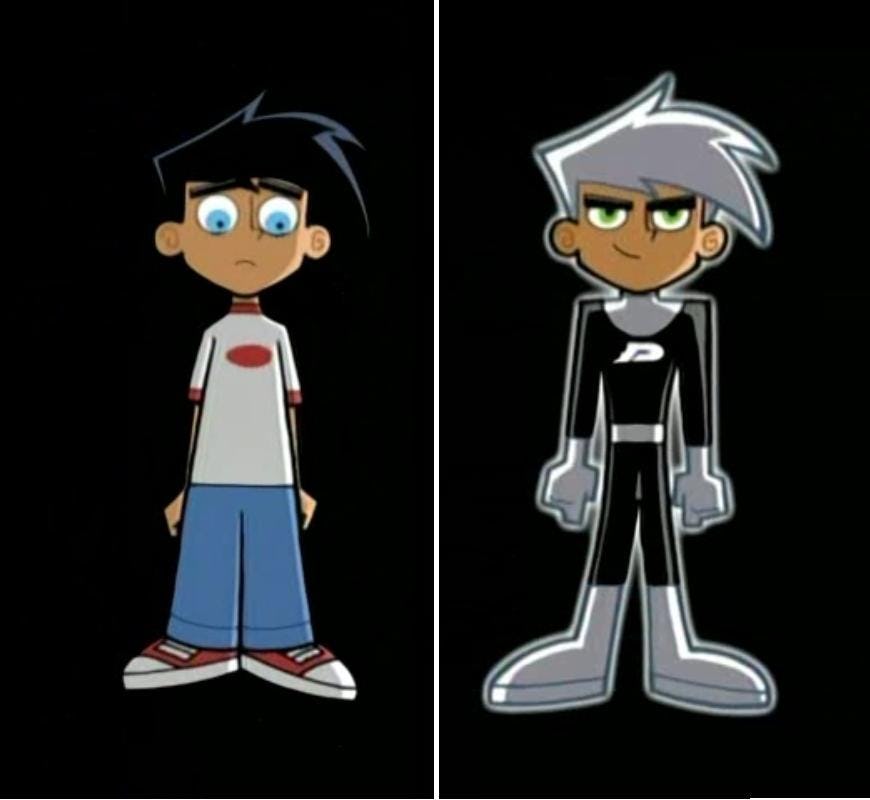

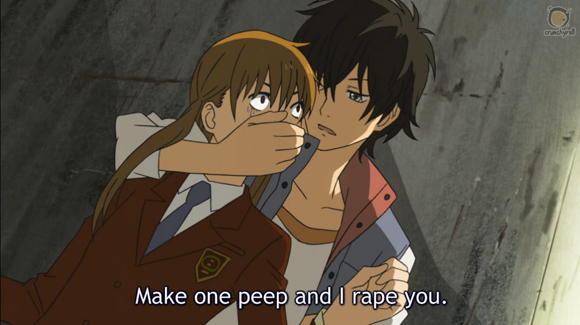

 The TED Talk titled
The TED Talk titled  Stokes summarizes that the media text that young boys and girls are exposed to need to present male characters as working alongside their female counterparts—they need to learn to work in unison with others regardless of gender rather than constantly being fed the idea that men are built to fight alone; because in reality, no one should face adversity on their own, head on.
Stokes summarizes that the media text that young boys and girls are exposed to need to present male characters as working alongside their female counterparts—they need to learn to work in unison with others regardless of gender rather than constantly being fed the idea that men are built to fight alone; because in reality, no one should face adversity on their own, head on. 

 The characters of Stretch Armstrong are both down to earth and likable. They truly feel like dynamic people, as opposed to walking stereotypes (with the exception of Ricardo who is still presented as quite one-sided). Both Nathan and Jake are full of insecurities, which seem to vanish once they step into their superhero personas. The confidence that they gain while keeping their city safe is realistically shown to influence each character in their day-to-day lives—in that they are more willing to take social risks given they willingly put their own lives in danger for their city whenever needed. The trio’s team dynamic works extremely well in that Nathan and Jake have been friends for an extended period of time due to their clear similarities, while Ricardo is forced into the group due to school circumstances, and correspondingly influences their routine. They each have unique traits that are more than enough to differentiate these characters from one another, utilizing a wide range of personality traits that audiences can relate to on, at least, some level.
The characters of Stretch Armstrong are both down to earth and likable. They truly feel like dynamic people, as opposed to walking stereotypes (with the exception of Ricardo who is still presented as quite one-sided). Both Nathan and Jake are full of insecurities, which seem to vanish once they step into their superhero personas. The confidence that they gain while keeping their city safe is realistically shown to influence each character in their day-to-day lives—in that they are more willing to take social risks given they willingly put their own lives in danger for their city whenever needed. The trio’s team dynamic works extremely well in that Nathan and Jake have been friends for an extended period of time due to their clear similarities, while Ricardo is forced into the group due to school circumstances, and correspondingly influences their routine. They each have unique traits that are more than enough to differentiate these characters from one another, utilizing a wide range of personality traits that audiences can relate to on, at least, some level.

 Characters of Stretch Armstrong and the Flex Fighters are presented as realistic and relatable in part due to their dialogue. Not only is there plenty of wit in their conversations, but they also speak among each other very realistically. Nathan in particular is the most relatabe character in the way that he is written. He says whatever is on his mind, no matter how rash or off-topic it may be given the circumstance—a common way of speaking with close friends in actuality. He isn’t afraid to admit his flaws or insecurities, and corresponding to this, is able to see and vocalize his own strong points as well. Aside from some awkward taunting puns while in superhero form, which is hallmark to the superhero genre, the Flex Fighters exercise a solid amount of amusing self-awareness. Teasing one another, along with superhero stereotypes as a whole, keeps the characters’ dialogue comedic and witty.
Characters of Stretch Armstrong and the Flex Fighters are presented as realistic and relatable in part due to their dialogue. Not only is there plenty of wit in their conversations, but they also speak among each other very realistically. Nathan in particular is the most relatabe character in the way that he is written. He says whatever is on his mind, no matter how rash or off-topic it may be given the circumstance—a common way of speaking with close friends in actuality. He isn’t afraid to admit his flaws or insecurities, and corresponding to this, is able to see and vocalize his own strong points as well. Aside from some awkward taunting puns while in superhero form, which is hallmark to the superhero genre, the Flex Fighters exercise a solid amount of amusing self-awareness. Teasing one another, along with superhero stereotypes as a whole, keeps the characters’ dialogue comedic and witty. The premise of Stretch Armstrong and the Flex Fighters is quite childish when broken down—a group of teenagers stumble upon toxic chemicals that grant them elasticity-themed powers. Not only do our heroes receive their powers in the most trope-complying way, but the element of elasticity that connects their powers as a trio is ridiculous at best. The concept of their city being overseen by a powerful technology corporation, head by its charismatic and intelligent CEO, is a huge stereotype (i.e. Lex Luther of Justice League & Young Justice, Abraham Kane of Motorcity, Vlad Plasmius of Danny Phantom). The characters’ personalities and weekly villains’ interesting designs are enough to differentiate the series from others with a similar premise, but not necessarily enough to define it as anything groundbreaking or unique.
The premise of Stretch Armstrong and the Flex Fighters is quite childish when broken down—a group of teenagers stumble upon toxic chemicals that grant them elasticity-themed powers. Not only do our heroes receive their powers in the most trope-complying way, but the element of elasticity that connects their powers as a trio is ridiculous at best. The concept of their city being overseen by a powerful technology corporation, head by its charismatic and intelligent CEO, is a huge stereotype (i.e. Lex Luther of Justice League & Young Justice, Abraham Kane of Motorcity, Vlad Plasmius of Danny Phantom). The characters’ personalities and weekly villains’ interesting designs are enough to differentiate the series from others with a similar premise, but not necessarily enough to define it as anything groundbreaking or unique. Stretch Armstrong and the Flex Fighters holds up a subpar comparison to its cousin Spectacular Spiderman‘s plot (but in all fairness, many superhero series don’t hold a candle to this title). Episode one of Stretch Armstrong is full of exposition that is presented in anyway but subtle. When Jake gives Ricardo a tour around their school in the first episode, the series’ writers use this as an opportunity to glorify the facility full of unique and trope-defying student cliques. This presents Ricardo as a mere storytelling device to explain the series’ context to the audience.
Stretch Armstrong and the Flex Fighters holds up a subpar comparison to its cousin Spectacular Spiderman‘s plot (but in all fairness, many superhero series don’t hold a candle to this title). Episode one of Stretch Armstrong is full of exposition that is presented in anyway but subtle. When Jake gives Ricardo a tour around their school in the first episode, the series’ writers use this as an opportunity to glorify the facility full of unique and trope-defying student cliques. This presents Ricardo as a mere storytelling device to explain the series’ context to the audience. Stretch Armstrong and the Flex Fighters’ largest drawbacks are due in large part to the series’ focus on marketability. It follows a specific, seemingly researched, formula that gives the three protagonists distinct colours and personality traits that translates well into merchandising. Additionally, placing one member of the trio on a pedestal, in this case Jake Armstrong, as the leader of the group is another common move done in heavily merchandised series—it’s much easier to focus on a central character as the face of the series on promotional material. And it’s no surprise that the head of the series is the only Caucasian character of the group. Unlike another superhero series that is commonly covered on this blog, Miraculous Ladybug, Stretch Armstrong tries to hide the fact that its entire conception is based on the foundation of merchandising. This approach makes the series a lot weaker, as it tends to undermine the viewers’ level of awareness to capitalistic intentions.
Stretch Armstrong and the Flex Fighters’ largest drawbacks are due in large part to the series’ focus on marketability. It follows a specific, seemingly researched, formula that gives the three protagonists distinct colours and personality traits that translates well into merchandising. Additionally, placing one member of the trio on a pedestal, in this case Jake Armstrong, as the leader of the group is another common move done in heavily merchandised series—it’s much easier to focus on a central character as the face of the series on promotional material. And it’s no surprise that the head of the series is the only Caucasian character of the group. Unlike another superhero series that is commonly covered on this blog, Miraculous Ladybug, Stretch Armstrong tries to hide the fact that its entire conception is based on the foundation of merchandising. This approach makes the series a lot weaker, as it tends to undermine the viewers’ level of awareness to capitalistic intentions. Conclusion
Conclusion Miraculous Ladybug is one of the most popular Americanized cartoon series that is presently being broadcasted on an international scale. It features the kindhearted and clumsy Marinette Dupain-Cheng as she transforms into her crime-fighting superhero alter ego, Ladybug. She works alongside her partner Cat Noir—who, unbeknownst to her, is also her classmate and crush Adrien Agreste—to track down and defeat the dark magic that is plaguing Paris.
Miraculous Ladybug is one of the most popular Americanized cartoon series that is presently being broadcasted on an international scale. It features the kindhearted and clumsy Marinette Dupain-Cheng as she transforms into her crime-fighting superhero alter ego, Ladybug. She works alongside her partner Cat Noir—who, unbeknownst to her, is also her classmate and crush Adrien Agreste—to track down and defeat the dark magic that is plaguing Paris.


 While season one of Miraculous Ladybug tends to take itself seriously, its second season isn’t afraid to make fun of itself. Season 2 has a layer of self-awareness that admits to its audience that the premise of the series has some narrative gaps, rather than thinly extending viewers’ suspension of belief. Ironically, the addition of self-aware comments in Miraculous Ladybug‘s second season is used as a tool to strengthen its questionable plot points by revealing that even some of the characters are unsure of what is happening. It also paints the series as more playful, making it clear that the writing staff enjoys what they are doing. It is clear that more time was taken to write and translate the characters’ dialogue, which is most likely the reason behind the creative staff exuding charm and enjoyment into the batch of episodes.
While season one of Miraculous Ladybug tends to take itself seriously, its second season isn’t afraid to make fun of itself. Season 2 has a layer of self-awareness that admits to its audience that the premise of the series has some narrative gaps, rather than thinly extending viewers’ suspension of belief. Ironically, the addition of self-aware comments in Miraculous Ladybug‘s second season is used as a tool to strengthen its questionable plot points by revealing that even some of the characters are unsure of what is happening. It also paints the series as more playful, making it clear that the writing staff enjoys what they are doing. It is clear that more time was taken to write and translate the characters’ dialogue, which is most likely the reason behind the creative staff exuding charm and enjoyment into the batch of episodes. Speaking of self awareness, season 2 of Miraculous Ladybug makes a larger effort to target slightly older demographics. Rather than aiming solely at children, the executives behind the series have seemingly come to realize that Miraculous Ladybug attracts many teenagers and young adults, alongside children; thus, the creative team has diverted from creating simple episodic plots and instead moved into relatively complex (yet still episodic) narratives. Plot points, including how our heroes will defeat the villain of the week have become much less predictable compared to season one. Additionally, stakes including threat levels of villains, near identity reveals, and those causing alterations to the standard formula of the series, have become much more intense.
Speaking of self awareness, season 2 of Miraculous Ladybug makes a larger effort to target slightly older demographics. Rather than aiming solely at children, the executives behind the series have seemingly come to realize that Miraculous Ladybug attracts many teenagers and young adults, alongside children; thus, the creative team has diverted from creating simple episodic plots and instead moved into relatively complex (yet still episodic) narratives. Plot points, including how our heroes will defeat the villain of the week have become much less predictable compared to season one. Additionally, stakes including threat levels of villains, near identity reveals, and those causing alterations to the standard formula of the series, have become much more intense. Season two of Miraculous Ladybug also gives our characters more time to shine. Marinette, Adrien, and other background characters are treated as three-dimensional and are increasingly showcased in settings outside of their school, sharing different facets of their lives with the audience. Additionally, characters are given more dynamic personalities; for example, season one’s Cat Noir is presented as mildly problematic through ignoring Ladybug’s annoyance and seemingly forcing his romantic flirtation onto her. Despite Adrien’s whole-hearted intentions, this can make him appear somewhat insensitive. However, less than halfway into season 2 showcases Cat Noir being much more receptive to Ladybug’s outwardly platonic view of him. Although it definitely should not have taken this long to get to this result, season two has been showcasing much more empathetic and relatable characters, while giving the audience more time to follow their personal lives in each episode.
Season two of Miraculous Ladybug also gives our characters more time to shine. Marinette, Adrien, and other background characters are treated as three-dimensional and are increasingly showcased in settings outside of their school, sharing different facets of their lives with the audience. Additionally, characters are given more dynamic personalities; for example, season one’s Cat Noir is presented as mildly problematic through ignoring Ladybug’s annoyance and seemingly forcing his romantic flirtation onto her. Despite Adrien’s whole-hearted intentions, this can make him appear somewhat insensitive. However, less than halfway into season 2 showcases Cat Noir being much more receptive to Ladybug’s outwardly platonic view of him. Although it definitely should not have taken this long to get to this result, season two has been showcasing much more empathetic and relatable characters, while giving the audience more time to follow their personal lives in each episode.
 A near reveal in the season 2 episode The Dark Owl carries some lasting stakes as well, in that Tikki is now aware of Adrien’s identity. In season 1, the only significant occurrence that is carried over to more than one episode is the fact that Adrien had taken a book of miraculous holders from his father’s office. Season two has much more plot lines that can be carried over. Alya temporarily given the fox miraculous to fight alongside Ladybug and Cat Noir being another one. Although she is sworn to secrecy and will likely not bring the experience up to Marinette, I highly doubt that it won’t be referred to in an upcoming episode. Although her superheroine experience was only temporary, the implications are long-lasting, and it will most likely come to play in the near future.
A near reveal in the season 2 episode The Dark Owl carries some lasting stakes as well, in that Tikki is now aware of Adrien’s identity. In season 1, the only significant occurrence that is carried over to more than one episode is the fact that Adrien had taken a book of miraculous holders from his father’s office. Season two has much more plot lines that can be carried over. Alya temporarily given the fox miraculous to fight alongside Ladybug and Cat Noir being another one. Although she is sworn to secrecy and will likely not bring the experience up to Marinette, I highly doubt that it won’t be referred to in an upcoming episode. Although her superheroine experience was only temporary, the implications are long-lasting, and it will most likely come to play in the near future.

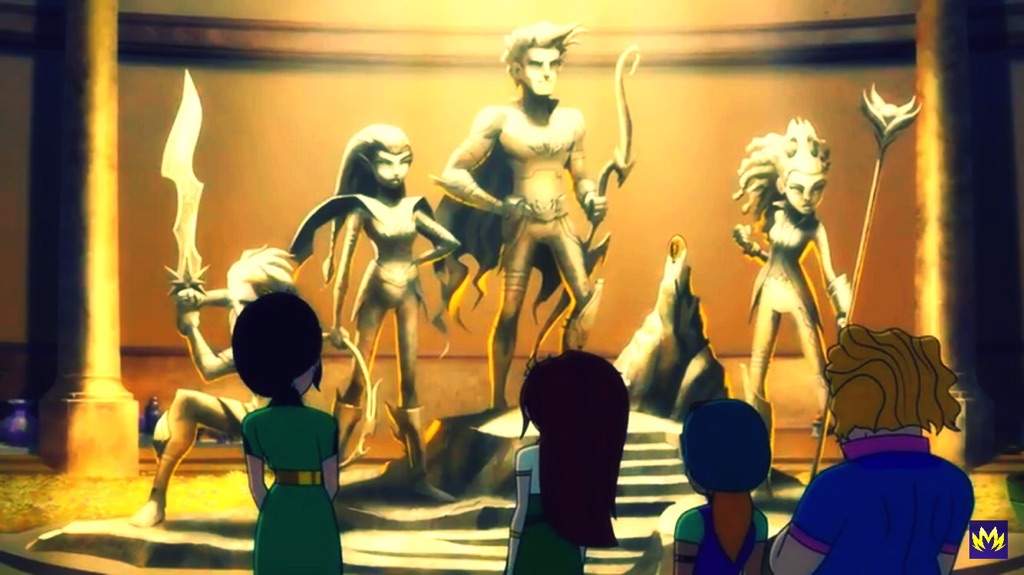 To this date, 26 episodes of Mysticons have been broadcasted and I can confidently say that it is a hidden gem in the world of modern-day animation, and amidst the top animated series to come out of Canada. Yes, there are some cliché moments sprinkled throughout its narrative, but these are largely forgiven due to the sheer charm that the characters, premise, and story emit. In the overcrowded world of entertainment media, originality is becoming a scarcity; thus, a long-winded and child-targeted series is bound to incorporate a few tropes. What sets Mysticons apart however, is how it approaches cliché characterizations and plot points, in that it does an excellent job to provide a fresh take on tired old ideas.
To this date, 26 episodes of Mysticons have been broadcasted and I can confidently say that it is a hidden gem in the world of modern-day animation, and amidst the top animated series to come out of Canada. Yes, there are some cliché moments sprinkled throughout its narrative, but these are largely forgiven due to the sheer charm that the characters, premise, and story emit. In the overcrowded world of entertainment media, originality is becoming a scarcity; thus, a long-winded and child-targeted series is bound to incorporate a few tropes. What sets Mysticons apart however, is how it approaches cliché characterizations and plot points, in that it does an excellent job to provide a fresh take on tired old ideas. Not only are the female characters of Mysticons treated exceptionally well by the series’ writers, but they are also well respected within the context of the series itself. The male characters that are featured do not feel the need to exert bravado over our protagonists, nor do they feel intimidated or emasculated by the Mysticons’ deep-seated power. Instead, male and female characters work alongside each other as equal partners striving to reach the shared goal of keeping Drake City safe from evil perpetrators—an element that should be inherent in children’s media, but is unfortunately uncommon within the vast scope of animated works currently available. In more recent years, there have been quite a few well-known series that embrace males and females working in unison without falling into gendered stereotypes (e.g. Star Vs. the Forces of Evil, Steven Universe, Miraculous Ladybug), but in the animated arena as a whole, the dynamic between these characters are often unbalanced and comply with problematic tropes. So on top of production companies straying away from the action genre, the fact that Mysticons falls under this category and presents forward-thinking female portrayals, fills a huge gap in the current animation environment.
Not only are the female characters of Mysticons treated exceptionally well by the series’ writers, but they are also well respected within the context of the series itself. The male characters that are featured do not feel the need to exert bravado over our protagonists, nor do they feel intimidated or emasculated by the Mysticons’ deep-seated power. Instead, male and female characters work alongside each other as equal partners striving to reach the shared goal of keeping Drake City safe from evil perpetrators—an element that should be inherent in children’s media, but is unfortunately uncommon within the vast scope of animated works currently available. In more recent years, there have been quite a few well-known series that embrace males and females working in unison without falling into gendered stereotypes (e.g. Star Vs. the Forces of Evil, Steven Universe, Miraculous Ladybug), but in the animated arena as a whole, the dynamic between these characters are often unbalanced and comply with problematic tropes. So on top of production companies straying away from the action genre, the fact that Mysticons falls under this category and presents forward-thinking female portrayals, fills a huge gap in the current animation environment.
 In addition to thoughtful characterization, diversity is a major theme presented in Mysticons. Not only in terms of social standing, but as mentioned previously, the series also utilizes a variety of human and inhuman races that coexist harmoniously. The series even showcases the early budding of a same-sex relationship—and not between background or one-off characters, but involving one of the main protagonists and presented in a way that isn’t glorified. This is groundbreaking in the arena of animation that so vigorously attempts to shelter children from progressively-liberal thoughts.
In addition to thoughtful characterization, diversity is a major theme presented in Mysticons. Not only in terms of social standing, but as mentioned previously, the series also utilizes a variety of human and inhuman races that coexist harmoniously. The series even showcases the early budding of a same-sex relationship—and not between background or one-off characters, but involving one of the main protagonists and presented in a way that isn’t glorified. This is groundbreaking in the arena of animation that so vigorously attempts to shelter children from progressively-liberal thoughts.  From My Little Pony: Friendship is Magic (2010 – present) to Transformers: Robots in Disguise (2015 – 2017) Hasbro Studios has been behind the production of a wide variety of animated television and web series. As one of the largest toy-manufacturing companies in the world, it’s no surprise that the creation of its sudio’s series are directly tied to merchandising.
From My Little Pony: Friendship is Magic (2010 – present) to Transformers: Robots in Disguise (2015 – 2017) Hasbro Studios has been behind the production of a wide variety of animated television and web series. As one of the largest toy-manufacturing companies in the world, it’s no surprise that the creation of its sudio’s series are directly tied to merchandising.

 While consumerism may not be the ideal platform for any form of storytelling to be built on, at the end of the day, it provides avid cartoon viewers with more animated content. It’s important to keep in mind that chastising a series for its capitalistic roots does not entirely exclude traditional television that thrives on advertising dollars. The clear difference is that Hasbro Studio’s series are directly tied to merchandise sales and need to cater its content to the production and distribution of products— while traditionally-aired series are expected to indirectly cater to advertisers through staying within their conceived target market. Overall, both routes are influenced by capitalistic undertones with are inherently just another component of entertainment; as such, should the level of capitalistic sway really be a defining factor of what makes an excellent series? Or rather, should a series be automatically reprimanded simply because it is funded by a children’s toy corporation?
While consumerism may not be the ideal platform for any form of storytelling to be built on, at the end of the day, it provides avid cartoon viewers with more animated content. It’s important to keep in mind that chastising a series for its capitalistic roots does not entirely exclude traditional television that thrives on advertising dollars. The clear difference is that Hasbro Studio’s series are directly tied to merchandise sales and need to cater its content to the production and distribution of products— while traditionally-aired series are expected to indirectly cater to advertisers through staying within their conceived target market. Overall, both routes are influenced by capitalistic undertones with are inherently just another component of entertainment; as such, should the level of capitalistic sway really be a defining factor of what makes an excellent series? Or rather, should a series be automatically reprimanded simply because it is funded by a children’s toy corporation?